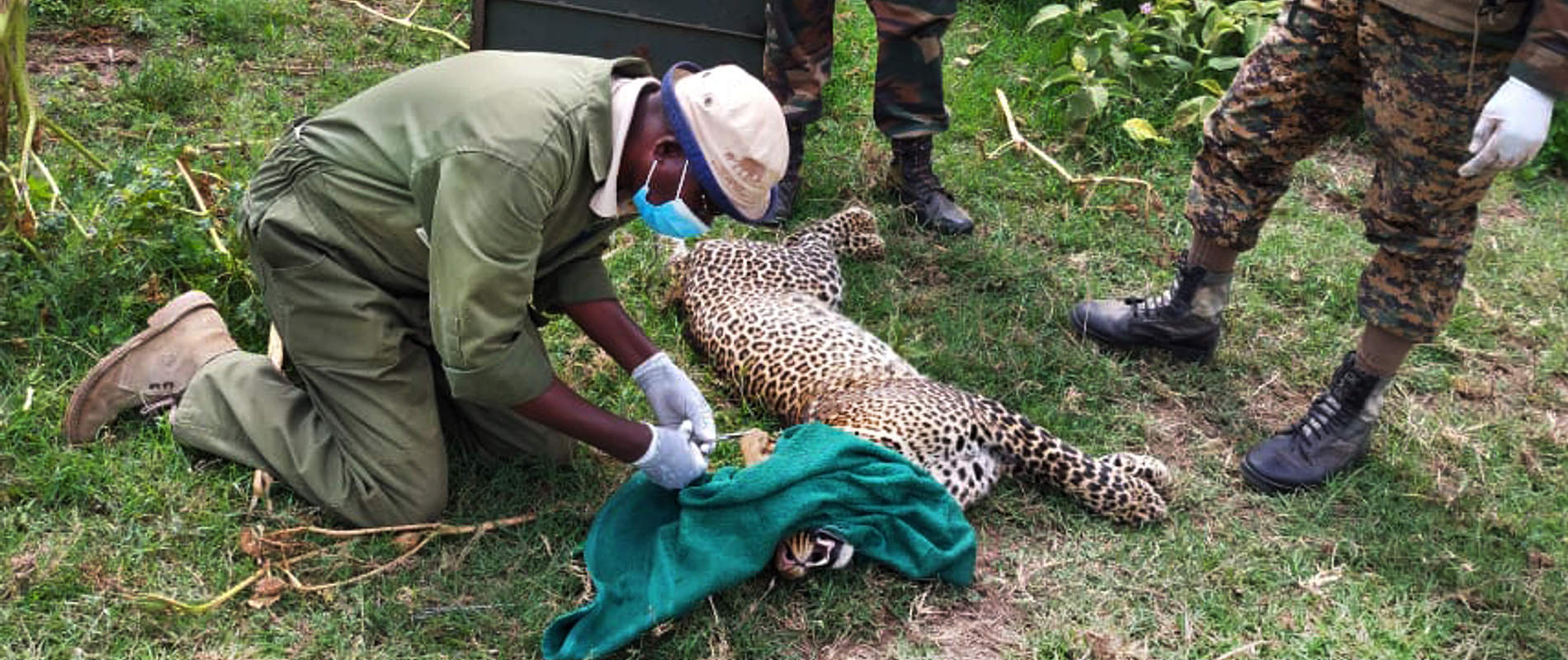18 years ago, we launched our first Mobile Veterinary Unit in partnership with the Kenya Wildlife Service. Since then, it has grown into a cornerstone of our conservation projects, providing a lifeline to ill and injured creatures across Kenya. Over the years, we have attended to over 7,500 veterinary cases, saving thousands of wild lives in the process.

This new team's area of operation encompasses wildlife ranges around Kenya's Rift Valley lakes, including lake Naivasha
The pressure on our natural world is only increasing. As threats like habitat loss and climate change take their toll, wildlife are more vulnerable to disease outbreak and direct injuries through human activities. It is vital to take a proactive approach, putting more teams in key ecosystems to monitor, treat, and protect vulnerable wildlife.

KWS Vet Dr. Titus Kaitho prepares to dart an injured Zebra

Treatment of a southern white rhino Nakuru National Park
That is why we were proud to launch our sixth SWT/KWS Mobile Veterinary Unit on 26th May 2021, based out of Naivasha. With KWS veterinarian Dr Titus Kaitho at the helm, the new Rift Valley Unit will serve wildlife in the Lake Naivasha – Elementaita – Nakuru Region and the Bogoria – Baringo Region. These areas are of great ecological significance, supporting all manner of life, including important populations of endangered species such as black and southern white rhino, mountain bongo, Rothschild’s giraffe, lion, cheetah, and leopard and it is also home to the western Kenya elephant population. The area is known for its diverse birdlife, including over 1.5 million flamingos who use Lake Nakuru and Lake Bogoria in their migratory route.

Picturesque Nakuru National Park is also one of Kenya's first rhino sanctuaries

Nakuru National Park
Like much of Kenya, the creatures of the Rift Valley are struggling in light of the expanding human footprint. Bushmeat poaching, human-wildlife conflict, livestock encroachment, and competition over resources are on the rise — and for wildlife, the consequences are often fatal. Our Rift Valley Unit will be an important presence in the area, rapidly responding to cases and alleviating the suffering of all manner of creatures.

Treatment of an Injured Zerba

Helping a snared buffalo
The Rift Valley Unit already hit the ground running, attending to 10 wildlife cases in its first week of operations. They treated five zebras and one buffalo for snare wounds, along with a male white rhino who had been injured in a territorial fight. The team also supported the translocation of seven hartebeests and two elands, moving them off community lands and into a protected area. At Marula Estates, they rescued a leopard who had been captured in a lion trap. He was translocated deep into Aberdares National Park, protecting him and the community he had targeted.

Kenya's Rift Valley floor is strewn with picturesque lakes whose shores host abundant wildlife

Lake Bagoria
The conservation challenges facing our natural world are many and varied, which is why a field veterinary presence is so vital. The Rift Valley Unit has already demonstrated the impact it will have on this threatened habitat. We are so grateful for your support in making this work possible, helping us save more wild lives across Kenya.
